Son My Memorial
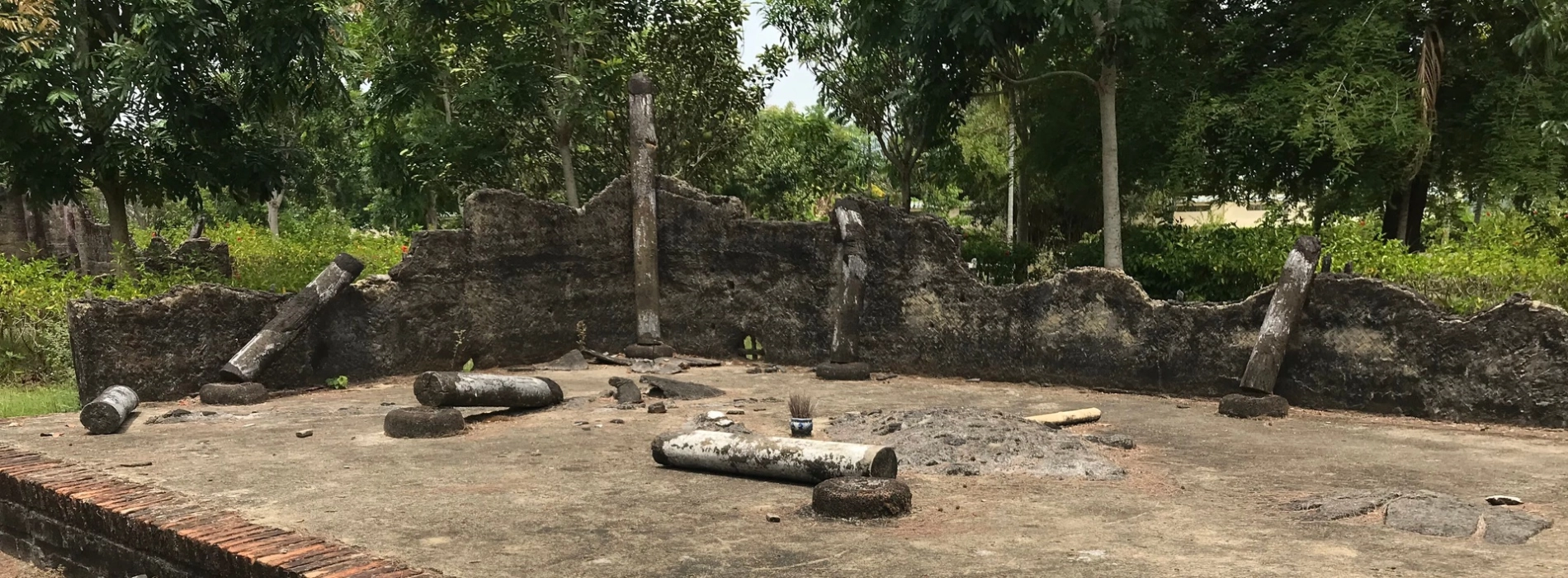
Civilians do not directly start wars, yet they are the ones who suffer the most from them. According to the rules of war, military forces are not allowed to harm civilians, but one flawed regulation has cost countless innocent lives. The My Lai Massacre stands as one of the most painful memories of the Vietnam War.
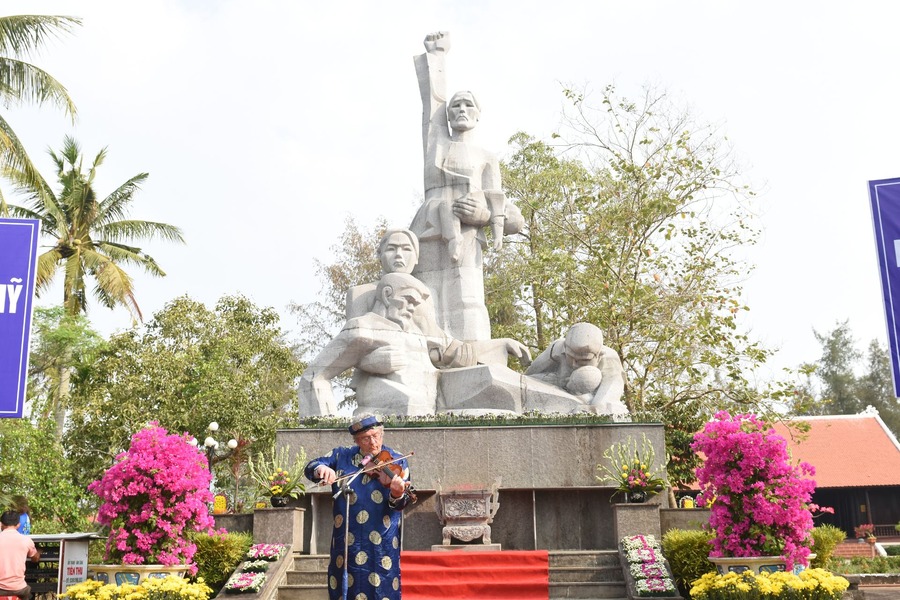
An American war veteran plays the violin in front of the memorial. Photo: Quang Ngai Tourism
Son My Memorial was built to commemorate that tragic event. Today, it serves as a place of remembrance for war veterans from both sides, locals, and tourists alike. Beyond honoring the past, the memorial also encourages people to work toward a better future for the world. Join Asia King Travel in exploring this meaningful site through the article below.
According to U.S. intelligence, after the Tet Offensive in 1968, the North Vietnamese Army had retreated and was hiding in Son My Village, Quang Ngai Province. The U.S. Army decided to launch a major assault on the suspected villages. On March 16, 1968, Captain Ernest Medina led a company under the order to "kill anything that moves" in My Lai 4 Hamlet.
After a brief clearing assault with artillery and machine-gun fire from helicopters, the company landed in Son My village. The soldiers found no Viet Cong, only civilians, mostly women and children, trying to hide from the American sweep. Many villagers were still cooking their morning meals. Nevertheless, the soldiers strictly followed Captain Medina's orders. The entire company began the massacre.
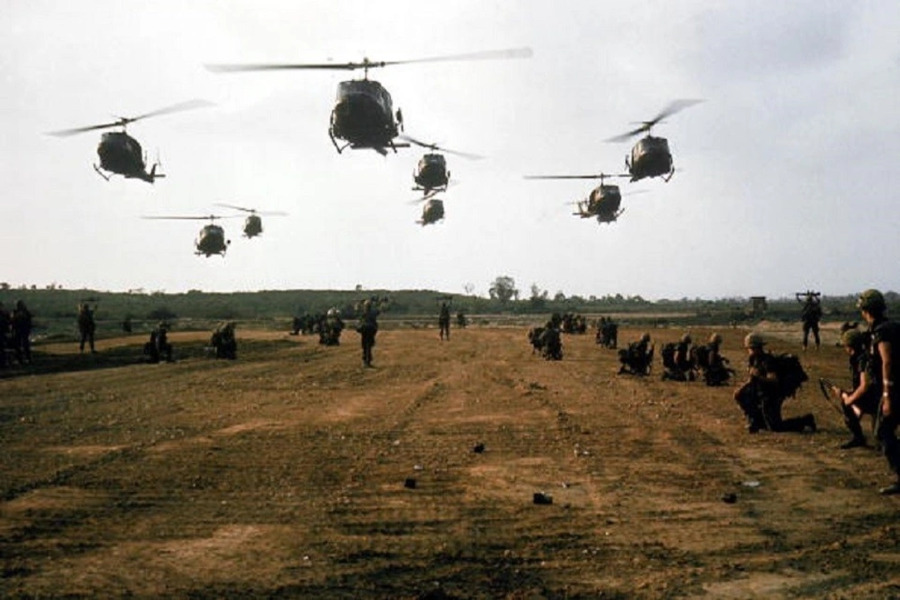
U.S. soldiers landed in My Lai on the morning of March 16, 1968. Photo: Ronald L.Haeberle
The American soldiers opened fire indiscriminately on the villagers. The level of brutality escalated quickly. They used bayonets to stab and slowly mutilate people until they died. Those hiding in houses or bunkers were trapped as grenades were thrown in, leaving them no way to escape. Women were raped before being killed. Even more horrifying, one U.S. soldier used his M16 to gun down a newborn baby just as it hit the ground.
A U.S. helicopter crew flying over the village witnessed the horrifying scene. Pilot Hugh Thompson Jr. landed the helicopter and began searching for survivors. Along with his crew: co-pilot Glenn Andreotta and gunner Lawrence Colburn, they intervened to stop their fellow soldiers from continuing the massacre. The crew rescued around 12 to 16 people from a bunker, and later they saved a child who had miraculously survived in a ditch filled with corpses.
The number recorded at the Son My Memorial Site is 504 civilians, along with thousands of animals sharing the same tragic fate. The commanders responsible for the attack were brought to trial. The soldiers from the helicopter crew who rescued the survivors were awarded the Soldier’s Medal for their heroic actions.
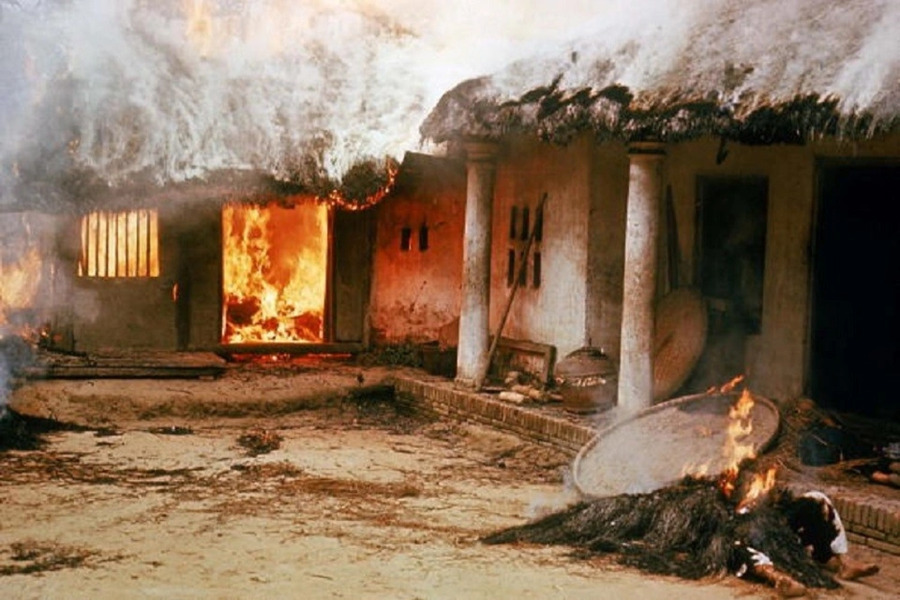
U.S. soldiers destroyed everything in sight. Photo: Ronald L.Haeberle
In 1978, Son My Memorial was established in Quang Ngai City, Quang Ngai Province. In 2002, it was officially recognized as a National Relic Site. Notably, in 2007, an American war veteran traveled halfway around the world to present the site’s management board with a video documenting the massacre, in commemoration of the 40th anniversary of the tragedy.
After landing in Da Nang or Quang Nam, head south along National Highway 1A toward Quang Ngai. When you reach the intersection with National Highway 24B, turn onto it to enter the city. The memorial site is located on the northeastern outskirts of Quang Ngai City. On the way, you can stop to visit the tomb of Huynh Thuc Khang, a patriotic scholar from the first half of the 20th century.
Suggested for you: Vietnam Veteran Tours 17 days: History Insights
The memorial site is open year-round, but it’s best to visit around the anniversary of the massacre, in mid-March. During this time, the site holds various remembrance activities and ceremonies to honor and pray for the unfortunate victims.
Scattered throughout the memorial site are the burial places of the victims of the massacre. There are mass graves, graves near irrigation ditches, and even the grave of a one-year-old child... Each one tells a story of the brutality of the massacre and the suffering endured by the victims in their final moments.
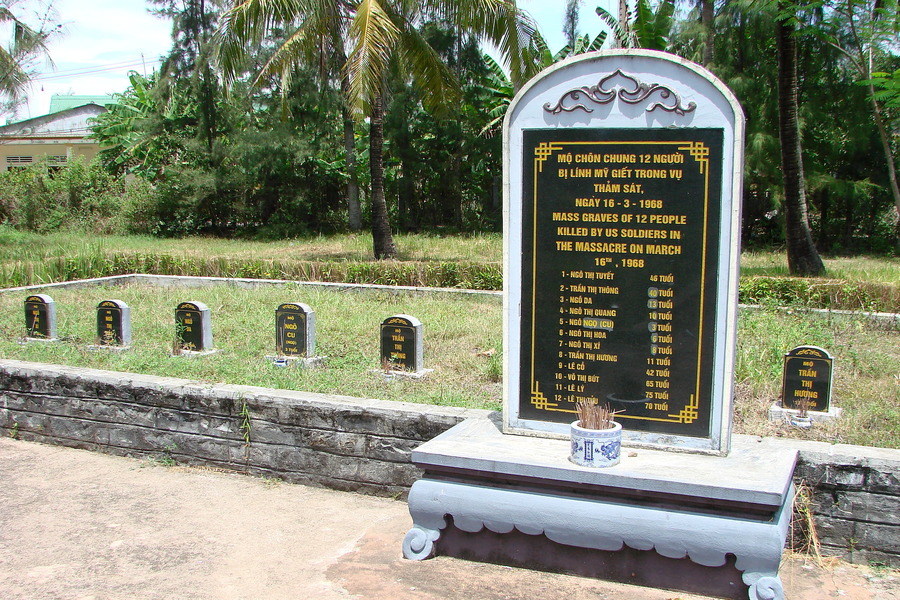
A mass grave, where even a 3-year-old child was killed. Photo: Adam Jones
The exhibition hall is in the center of the memorial site, built with a simple yet solemn architectural style. Inside, it displays hundreds of photographs taken by war correspondents, especially American journalist Ronald L. Haeberle, who captured the heartbreaking moments of the massacre. American and international journalists also condemned the event through numerous articles and public investigations.
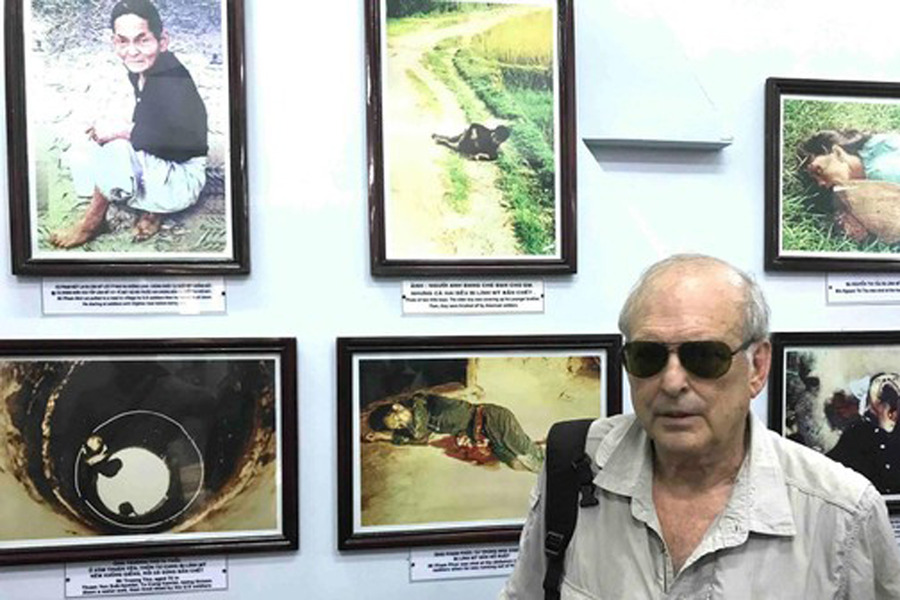
Mr. Haeberle stands beside the photographs he took during the massacre. Photo: NVCC
In another section, personal belongings such as children's clothes, household items, pots, mats, blankets, and more are found at the scene after the massacre. There are also written accounts from survivors and the relatives of the victims. Letters and diaries have been preserved, serving as heartfelt messages from the past. Finally, there are models that recreate the massacre, helping visitors better visualize the horrific brutality of the event.
The original site of Son My is what remains after the horrific massacre on March 16, 1968. It preserves many of the real traces from that day. You’ll see charred house foundations, shattered brickwork, and collapsed walls left almost exactly as they were when the massacre occurred.
Each foundation is marked with a plaque showing the homeowner’s name, how many people were killed, and how they were killed. Heartbreaking, yet necessary, so that future generations never forget.
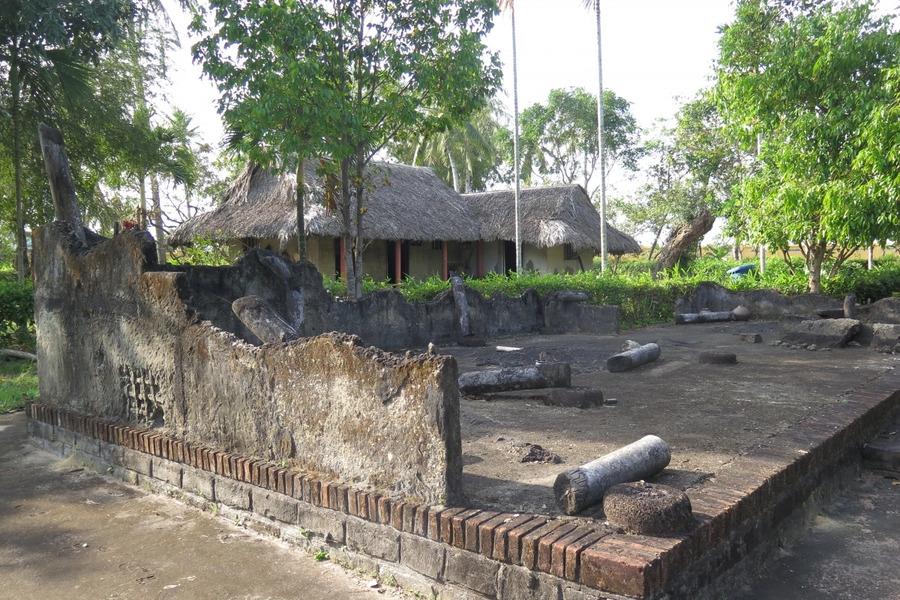
The remains of a house that was burned down. Photo: VOV
When you visit Son My Memorial, sometimes no narration or sound is needed. The silence alone speaks volumes. This is a place for remembrance, but also a place to educate future generations about just how precious peace truly is. Let Asia King Travel take you to this deeply historic and meaningful destination.
Suggested for you: Vietnam Veteran Tour 11 days: South & Centre of Vietnam War Memory